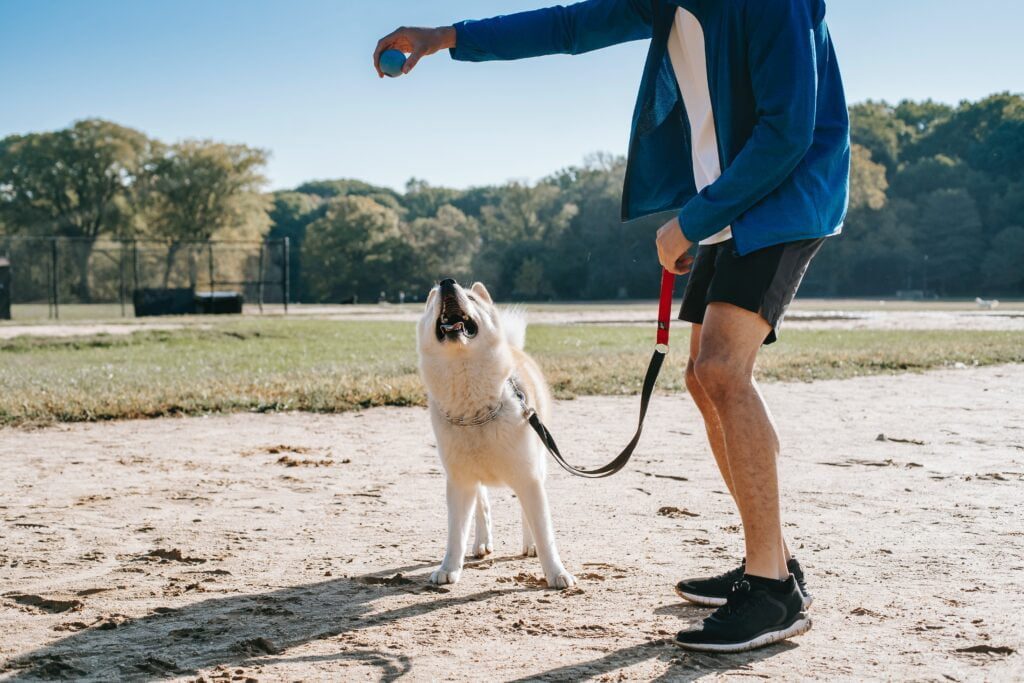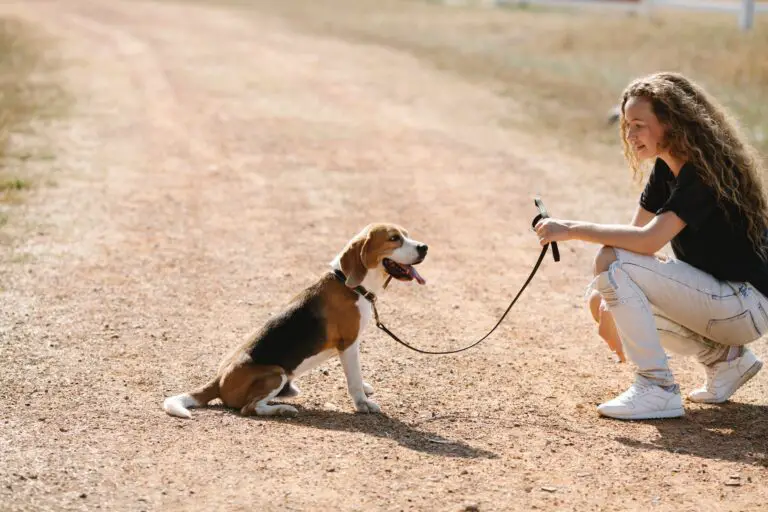How long does it take to train a reactive dog? When your furry pet starts to act out, displaying behaviors like barking, lunging, or aggressive behavior towards other dogs, people, or everyday items, it’s important to address their canine reactivity. The duration of the training process varies for each dog due to individual differences and developmental factors. While the exact answer is still being determined, you can embark on the journey of transforming your reactive dog into a calmer and happier companion by understanding the training procedure, implementing suitable strategies, and maintaining patience.
It can be difficult and emotionally taxing to own a reactive dog. You’re not alone if your dog barks, lunges, or exhibits other signs of nervousness around other dogs, humans, or stimuli. The good news is that you can assist your animal buddy in getting over their reactive behaviour with the proper training, persistence, and consistency, strengthening your bond. This post will go in-depth on recovering a reactive dog and provide insights, advice, and a reasonable schedule to help you manage your expectations.
Understanding Reactivity:
Let’s define responsiveness before moving on to the rehabilitation process. Fear, worry, or a lack of socialization can all lead to reactive behaviour. It’s critical to remember that your dog’s reaction is not a character flaw but rather a coping method. Due to past trauma, inherited traits, or a lack of favourable experiences during their crucial socialization stage, dogs might become reactive.
Setting Realistic Expectations:
Setting realistic expectations is crucial when starting the process of rehabilitating a reactive dog. Each dog is different, and their development will be influenced by various elements, including its history, level of sensitivity, and constancy in training. Remember that there is no set period for rehabilitation. While some dogs may progress within a few weeks, others might only for a few months or even longer.
Assessment and Training Plan:

Evaluating a reactive dog’s triggers and creating a training program are rehabilitation’s first and most essential steps. A qualified dog trainer or behaviourist can assist in analyzing your dog’s behaviours and developing a customized plan. The training program may incorporate counterconditioning, desensitization exercises, and instruction in alternative behaviours to divert their focus from triggers.
Consistency and Patience:
Rehabilitating a reactive dog takes a lot of patience and unflinching consistency. Establishing a daily schedule that includes training sessions, physical activity, mental stimulation, and lots of positive reinforcement is crucial. Remember that even if development may be gradual, every little success counts as progress.
Importance of Patience:
A reactive dog’s rehabilitation is a process that takes time and persistence. There is no quick-fix miracle. Setbacks are common since each dog develops at their rate. Dogs are incredibly observant creatures that can detect our emotions. You may foster a climate that promotes your dog’s recovery and education by remaining composed, patient, and upbeat throughout the procedure.
Positive Reinforcement and Training:
Training with positive reinforcement is an effective method for calming down aggressive dogs. Instead of punishing undesirable behaviours, it entails praising positive ones. You may gradually modify your dog’s response to triggers by rewarding their calm and relaxed behaviour with treats, praise, and toys. Your dog can develop new, positive connections with circumstances that previously caused fear by combining positive reinforcement, desensitization, and counterconditioning strategies.
Creating Structured Environment:
When rehabilitating a reactive dog, consistency and structure are essential. Creating a routine and predictable environment can help your dog feel safe and secure. Ensure your dog has a designated space to retreat and relax when feeling overwhelmed. Regular exercise, mental stimulation, and enrichment activities will help redirect their energy and reduce anxiety.
Seeking Professional Help:
While you can advance significantly on your own, it is strongly advised that you get professional advice from a licensed dog trainer or behaviourist. These professionals have the expertise and experience to evaluate your dog’s behaviour, pinpoint triggers, and offer specialized training regimens. Working with a trainer guarantees you’re utilizing the most efficient methods and getting advice suited to your dog’s requirements.
The Role of Socialization:
The rehabilitation of reactive dogs depends heavily on socialization. Your dog can progressively overcome their fear and anxiety by being exposed to positive encounters with other dogs, humans, and locations under controlled circumstances. Recall should start cautiously, keeping your dog away from potential triggers and gradually reducing the distance as they grow more efficiently. Your dog can develop excellent coping skills and confidence with consistent socialization efforts.
Timeframe and Realistic Expectation:
How long does it take to rehabilitate a reactive dog? This is the pressing query now. There isn’t a universal solution; it’s a fact. Every dog is different, and it can take time before they make any real advancement. A few weeks to several months or perhaps longer may pass throughout the recuperation process. Having reasonable expectations and taking your time during the procedure is critical. Always keep in mind that your dog’s welfare is the main priority. Thus, patience is essential.
Celebrating Small Victories:
Acknowledging and appreciating each minor’s success throughout the rehabilitation process is essential. No matter how small, every improvement is a significant victory for your reactive dog. Whether it’s a brief period of serenity on a stroll or effectively avoiding a trigger, acknowledge and reward progress. In addition to inspiring your dog, celebrating these victories will increase your self-assurance as a trainer and carer.
Challenges along the way:
A reactive dog might be difficult to rehabilitate. It’s critical to accept the possibility of setbacks. Even though your dog may have good and terrible days, it’s essential to exercise patience and persistence. Some typical difficulties are finding unanticipated triggers, behavioural setbacks, and modifying the training strategy. Remember, Rome wasn’t constructed overnight!
Lifelong Commitment:
A reactive dog’s rehabilitation is a journey that takes dedication, patience, and consistent work. Even though each dog’s growth will vary, it’s crucial to remember that progression, not perfection, is the main objective. Your dog will have a happier, more balanced life if you consistently reward good behaviour and create a nurturing environment.
Conclusion:
A reactive dog’s rehabilitation is a path that calls for dedication, tolerance, and comprehension. Because each dog develops at their rate, there is no set time frame for accomplishment. You may prepare for a calmer and happier future with your beloved pet by putting positive reinforcement training into practice, creating a disciplined environment, obtaining professional aid when necessary, and celebrating tiny triumphs. Recall that while the process may be complex, the benefits of turning a reactive dog into a self-assured and well-behaved friend are immense.
A reactive dog’s rehabilitation is a path that calls for commitment, compassion, and love. The link you develop with your dog and the positive improvements you notice are invaluable rewards, even though the time it takes to see improvement may vary. Maintain your dedication to the process, seek expert advice, and rejoice in each small accomplishment. Your reactive dog can become a well-behaved and content companion with your help, delighting you and their lives. Accept the trip.
- How to Start Feeding Your Dog Raw Food
- How to Teach an Old Dog to Use a Pee Pad Successfully
- Unlock Your Dog’s Superfood: 6 Essential Nutrients They Thrive On!
- Purina Pro Plan vs Blue Buffalo: Unveiling the Best for Your Pup
- Black Mouth Cur’s Choice: Premium Dog Food Guide


